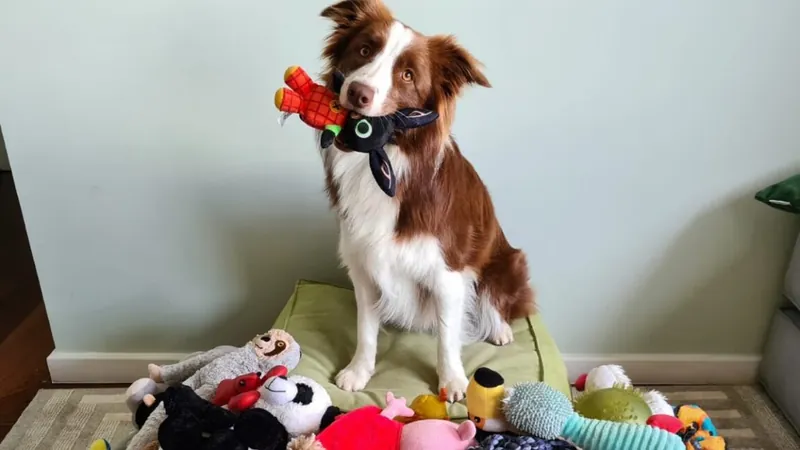
Incredible Canine Intelligence: Dogs Classify Toys by Function!
2025-09-18
Author: Olivia
Dogs Demonstrate Advanced Labeling Skills
A groundbreaking study published in *Current Biology* reveals that some dogs possess the astonishing ability to classify toys by their function, not just recognize them by name. This skill, known as "label extension," allows dogs to understand that different objects can serve a similar purpose, similar to how a child recognizes that a mug and a glass are both types of cups.
Natural Learning Without Formal Training
Unlike instances where animals require years of rigorous training to learn such concepts, the dogs in this study developed their remarkable abilities simply through playful interactions with their owners. Co-author Claudia Fugazza from Eötvös Loránd University in Hungary shares that these findings challenge our views on canine cognition and learning.
Unveiling Canine Cognition and Perception
Fugazza’s research team has been delving into how dogs process information, building upon their previous work on dogs' interpretation of human gestures. Astonishingly, these clever creatures demonstrate a unique spatial awareness, showing a preference for interpreting visual cues over what humans might find significant. This cognitive prowess suggests that dogs, especially the more intelligent breeds, think and perceive the world in ways akin to humans.
Exploring the Link Between Visual Acuity and Intelligence
The study also examined the correlation between a dog’s head shape and their visual acuity, positing that dogs with shorter heads may have better visual clarity, allowing them to navigate their environments similarly to us. Their tests revealed a fascinating connection: dogs with superior visual abilities displayed less spatial bias when it came to locating objects.
Function Over Form: A Unique Learning Process
Delving deeper into their study, the researchers worked with seven gifted word learner (GWL) dogs, teaching them to distinguish toys based on their functions—"pull" or "fetch"—rather than their appearances. By using natural play techniques, the dogs were able to correctly select unlabeled toys linked to past play experiences, demonstrating an impressive grasp of the objects' functions.
Impressive Results Without Formal Training
The results were remarkable: the dogs successfully identified the right toys more often than chance would suggest, proving that they can quickly learn labels and retain them without repetitive training. Fugazza concludes that these findings hint at much broader cognitive capabilities in dogs than previously understood, opening the door for more research into their language-oriented skills.
The Future of Canine Studies Looks Bright!
This groundbreaking research not only clarifies how dogs may communicate and comprehend their surroundings but also raises compelling questions about the cognitive abilities of other animals. As we uncover more about how our four-legged friends learn and interact with the world, we come to appreciate the remarkable bond between humans and dogs like never before.









 Brasil (PT)
Brasil (PT)
 Canada (EN)
Canada (EN)
 Chile (ES)
Chile (ES)
 Česko (CS)
Česko (CS)
 대한민국 (KO)
대한민국 (KO)
 España (ES)
España (ES)
 France (FR)
France (FR)
 Hong Kong (EN)
Hong Kong (EN)
 Italia (IT)
Italia (IT)
 日本 (JA)
日本 (JA)
 Magyarország (HU)
Magyarország (HU)
 Norge (NO)
Norge (NO)
 Polska (PL)
Polska (PL)
 Schweiz (DE)
Schweiz (DE)
 Singapore (EN)
Singapore (EN)
 Sverige (SV)
Sverige (SV)
 Suomi (FI)
Suomi (FI)
 Türkiye (TR)
Türkiye (TR)
 الإمارات العربية المتحدة (AR)
الإمارات العربية المتحدة (AR)